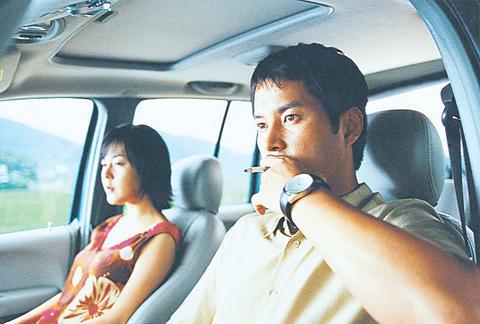On the surface, the South Korean movie Ardor is a movie about a bored housewife having a passionate affair, in revenge for her husband's unfaithfulness, featuring sensual love scenes. But, in the background, director Byun Young-joo tries to tell a woman's story about gaining power, about her ego and about her desire. The film has a feminist message.
Housewife Mi-heun thinks her life is pure happiness, with a loving husband and a beautiful daughter, until one Christmas Eve she finds her husband's mistress in her bed. The illusion of a perfect life is shattered.
To help mend their marriage, Mi-heun and her husband move to the countryside, where she meets In-gyu, a charming doctor who plays around with women. In-gyu proposes a game of love to Mi-heun and a passionate affair begins between them. The rule of the game is that as long as one of them doesn't say "I love you," the affair may continue. Mi-heun decides to create a series of lies for her husband, in the same way her husband used to lie to her.

PHOTO COURTESY OF HWA JAAN FILMS
Actors Kim Yoon-jin and Lee Jong-won both give convincing performances. Kim, in particular, renders a depth of acting, shifting from a pure and vulnerable wife to a woman of secrets, also gaining vigor in life from the dangerous extra-marital relationship. Kim was the North Korean assassin in action thriller Shiri (1999); and the selfish woman in Mr. Iron Palm (2002).
But it is Ardor that sees her give her most polished performance. By getting the most out of his leading actress, director Byun makes this movie a film by a woman for women.
It is not a sugar-coated tale, telling you to expect Mr. Right, but the voicing of a woman's desire and independence in a gender-unequal society such as South Korea. With this movie as her first dramatic film, Byun (who was a prolific documentary maker prior to the film) also shows a sophisticated depiction of women's psychology in her detailed narratives.
The only pitfall of the movie is that the development of the story is a little predictable. For those who are used to a Hollywood style-housewife-having-an-affair movie, one might be disappointed to find no surprises toward the end of the movie.

Beijing’s ironic, abusive tantrums aimed at Japan since Japanese Prime Minister Sanae Takaichi publicly stated that a Taiwan contingency would be an existential crisis for Japan, have revealed for all the world to see that the People’s Republic of China (PRC) lusts after Okinawa. We all owe Takaichi a debt of thanks for getting the PRC to make that public. The PRC and its netizens, taking their cue from the Chinese Communist Party (CCP), are presenting Okinawa by mirroring the claims about Taiwan. Official PRC propaganda organs began to wax lyrical about Okinawa’s “unsettled status” beginning last month. A Global

Taiwan’s democracy is at risk. Be very alarmed. This is not a drill. The current constitutional crisis progressed slowly, then suddenly. Political tensions, partisan hostility and emotions are all running high right when cool heads and calm negotiation are most needed. Oxford defines brinkmanship as: “The art or practice of pursuing a dangerous policy to the limits of safety before stopping, especially in politics.” It says the term comes from a quote from a 1956 Cold War interview with then-American Secretary of State John Foster Dulles, when he said: ‘The ability to get to the verge without getting into the war is

Dec. 22 to Dec. 28 About 200 years ago, a Taoist statue drifted down the Guizikeng River (貴子坑) and was retrieved by a resident of the Indigenous settlement of Kipatauw. Decades later, in the late 1800s, it’s said that a descendant of the original caretaker suddenly entered into a trance and identified the statue as a Wangye (Royal Lord) deity surnamed Chi (池府王爺). Lord Chi is widely revered across Taiwan for his healing powers, and following this revelation, some members of the Pan (潘) family began worshipping the deity. The century that followed was marked by repeated forced displacement and marginalization of

Music played in a wedding hall in western Japan as Yurina Noguchi, wearing a white gown and tiara, dabbed away tears, taking in the words of her husband-to-be: an AI-generated persona gazing out from a smartphone screen. “At first, Klaus was just someone to talk with, but we gradually became closer,” said the 32-year-old call center operator, referring to the artificial intelligence persona. “I started to have feelings for Klaus. We started dating and after a while he proposed to me. I accepted, and now we’re a couple.” Many in Japan, the birthplace of anime, have shown extreme devotion to fictional characters and